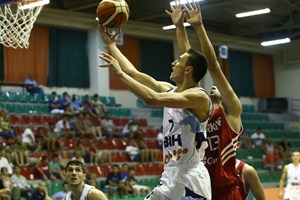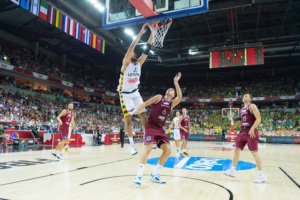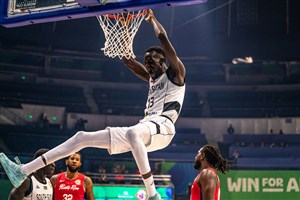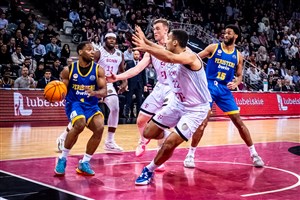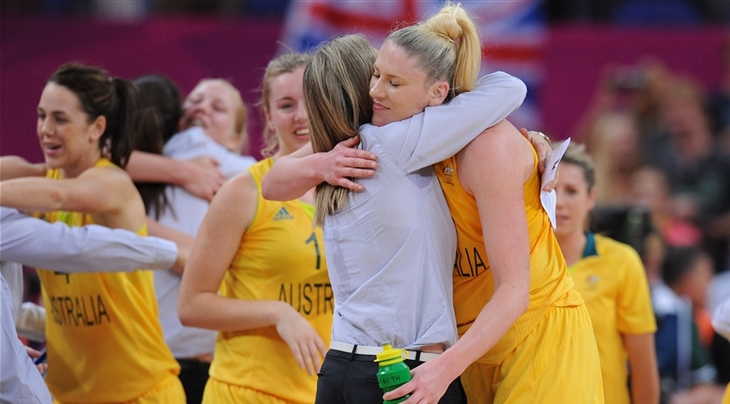
NBL looks forward, LJ looks back
MELBOURNE (Paulo Kennedy's View from Downunder) - The NBL's announcement of a new salary and points cap system gave us a peak into the future this week, while Lauren Jackson's retirement gave reason to reflect on a remarkable career.
Undoubtedly Australia's greatest ever women's player, Jackson's impact was far greater than even her immense talent due to the open, honest and dignified way she carried herself throughout her career.
Just over a year ago I was lucky enough to have a long chat with LJ, looking back over her memorable career - three-time WNBA MVP, four-time WNBL MVP, one FIBA Women's World Championship title, three silver and one bronze Olympic medals - and you can read a feature on her here and a column about Jackson and Penny Taylor here.
Jackson's achievements speak for themselves and when teammates speak about her - even young Opals who have only played or trained briefly with Jackson - they talk about her like a mother figure, such was her influence. To me, that's just as impressive as her accolades.
IN PICTURES: Lauren Jackson's incredible career. https://t.co/gLmN2DTcXw @laurenej15 pic.twitter.com/S43qPQXL5B
— The Australian (@australian) March 31, 2016
On a different scale, the NBL has also been truly impressive the past year with the way they've approached difficult issues, and their announcement of a new salary system certainly showed great innovation.
The problem facing the league was the players' association desperately wanting to get rid of the Player Points System (PPS), but the NBL needs a points system to maintain relative parity between big and small-budget teams.
So what did they do? Announce the removal of the PPS and immediately replace it with an identical concept where points ratings are replaced with dollar value ratings! The important change, however, is the flexibility now available to clubs.
Each player will be assigned a contract value based on past performance (just like the PPS) but instead of having a hard 70-point cap, the new dollar-value system has a soft $1.1 million cap which teams can exceed at a cost, their payment distributed to clubs who are under the cap.
NBL has eyes on longer-term benefits with changes to player contract & salary rules announced today. https://t.co/yeaCeguUOS
— NBL (@NBL) March 30, 2016
This is the change that should have been made to the PPS two seasons ago - allowing clubs to buy additional points - but instead, loyalty discounts were reintroduced, rendering the PPS largely irrelevant. This year's champions, Perth Wildcats, had a roster that should have been rated at 81 points without discounts. Ridiculous.
Under the new system, richer clubs are encouraged to bring as much talent into the competition as possible and some of their wealth is redistributed to help less financial clubs do likewise. While there's still cash at the top end, everyone wins.
This open-ended nature of the new salary cap makes the league's move to three imports important. As we are seeing with the Sydney Kings reportedly signing MVP Kevin Lisch from Illawarra Hawks, there is no real impediment to bigger clubs pinching stars from their smaller rivals.
If Illawarra can't hold onto some of their local stars, at least they have the flexibility to bring in more Americans to fill some of the breach. It's not perfect, you don't find players like Lisch, AJ Ogilvy and Kirk Penney growing on trees, but it at least it keeps low-budget clubs in with a chance.
Pleasingly, the increase of rosters to 11 players and the addition of the Brisbane Bullets means there will be a minimum of 72 roster spots for locals this season, up on last year's 64 but well down on the long-term average of around 100.
Another good initiative is allowing marquee locals to replace import spots, with teams encouraged to do so via reductions in the allocated contract value of their marquees. I suspect the finer details may still need some work, but it is a positive step for retaining our current stars and attracting players who finish an NBA stint.
The only major negative from the changes is the league's decision to make players' salaries public, which doesn't seem to make sense. GM Jeremy Loeliger claimed this is "really important in terms of enforcing the salary cap".
"Under the old system if you had a player who was paid X but his team was only disclosing that they were paying Y," he said.
"But what if that player had to disclose the lesser amount they were being officially paid in a bona-fide way publicly? That would then be devaluing them in the market."
However, according to the NBL, "player values for salary cap purposes (are) to be assigned by the Contract Review Committee - their values will override the salary submitted on paperwork to the NBL as a measure to police the salary cap and ensure players are appropriately valued".
In other words, it's the assigned value that counts against the salary cap, not the actual earnings, and if that's correct making players earnings public is pointless and should be re-examined.
The NBL is also an attractive league due to its style of play, summer schedule, good culture and being in an English-speaking country. This sees some players sign for less than they might demand elsewhere, but if that figure is made public it could devalue them in the market and act as a dissuasion.
@Andthefoulnet I'm fine for people to guess as much as they want, educated guesses even. But to have it published for everyone to see.......
— Chris Goulding (@ChrisGoulding43) March 30, 2016
The majority of these changes are positive, however, even if they are a significant gamble that greater spending on players will increase revenue, but that's a topic for another column.
Here’s a summary of some of the other changes to the NBL salary system:
- All teams must have five players whose combined salaries don’t exceed $400,000, although the NBL is yet to decide whether this is their actual salary or the value assigned by the Contract Review Committee. This is an equalisation measure under the 'new points system';
- Teams can have a total of four players who are either imports or marquee local players, with a maximum of three imports;
- The Contract Review Committee will assign new imports a rating based on past performance in other competitions. Given imports come from places as diverse as the NBA, Euroleague and NCAA Division 2, this has can of worms written all over it;
- Clubs must spend at least 90 per cent of the salary cap - $990,000 in 2016/17. This is players’ actual earnings, not their value as assigned by the Contract Review Committee;
- The salary cap in future years will be determined by averaging all teams’ salary payments for the prior season. This smells of spiralling payments, given all teams must pay 90 per cent of the cap but there is no ceiling for high-spending clubs;
- Development players can now play in all home and away games and can be up to 25 years of age, up from 24 last season.
Paulo Kennedy
FIBA
FIBA's columnists write on a wide range of topics relating to basketball that are of interest to them. The opinions they express are their own and in no way reflect those of FIBA.
FIBA takes no responsibility and gives no guarantees, warranties or representations, implied or otherwise, for the content or accuracy of the content and opinion expressed in the above article.

